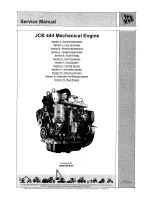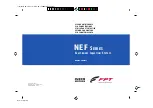
5 Connection
-
22
-
5.5 Input signals and output signals
CAUTION
Do not perform the motor’s starting and stopping operations by
turning the power on and off. Perform them by inputting
START/STOP and RUN/BRAKE. This may cause injury or
damage to the equipment.
Note
•
The input signals (START/STOP, RUN/BRAKE, CW/CCW, INT.VR/ EXT,
ALARM-RESET) must be ON for at least 10 ms. It may cause malfunction of
the motor.
•
The motor temperature rise is sharper as friction load and inertial load are
higher, and start, instantaneous stop and reversing frequency is higher. It
must be used when motor case temperature does not exceed 90 °C
(194 °F), and driver heat radiation plate temperature does not exceed 90 °C
(194 °F).
START/STOP input and RUN/BRAKE input
To switch between motor running and instantaneous stop (or stop), use two signals.
START/STOP input
RUN/BRAKE input
Motor behavior
ON (L level)
ON (L level)
Running
∗
1
ON (L level)
OFF (H level)
Instantaneous stop
Signal level
OFF (H level)
ON (L level)
Stop
∗
2
∗1
The motor speed can be made to reach the set speed by any one of the internal
potentiometer, external potentiometer or external DC voltage.
∗2
The motor is stopped by inertia.
Note
•
The BRAKE takes precedence when START/STOP and RUN/BRAKE inputs
are turned off (H level) simultaneously.
•
Do not operate (ON/OFF-switch) the START/STOP input, RUN/BRAKE input
and, CW/CCW input or INT.VR/EXT input simultaneously. After switching an
input, allow a minimum interval of 10 ms before switching to another input.
START/STOP input
START is selected when the input is on (L level), and motor starts running. STOP is
selected when the input is off (H level), and motor stops (Instantaneous stop
function is not provided.).











































